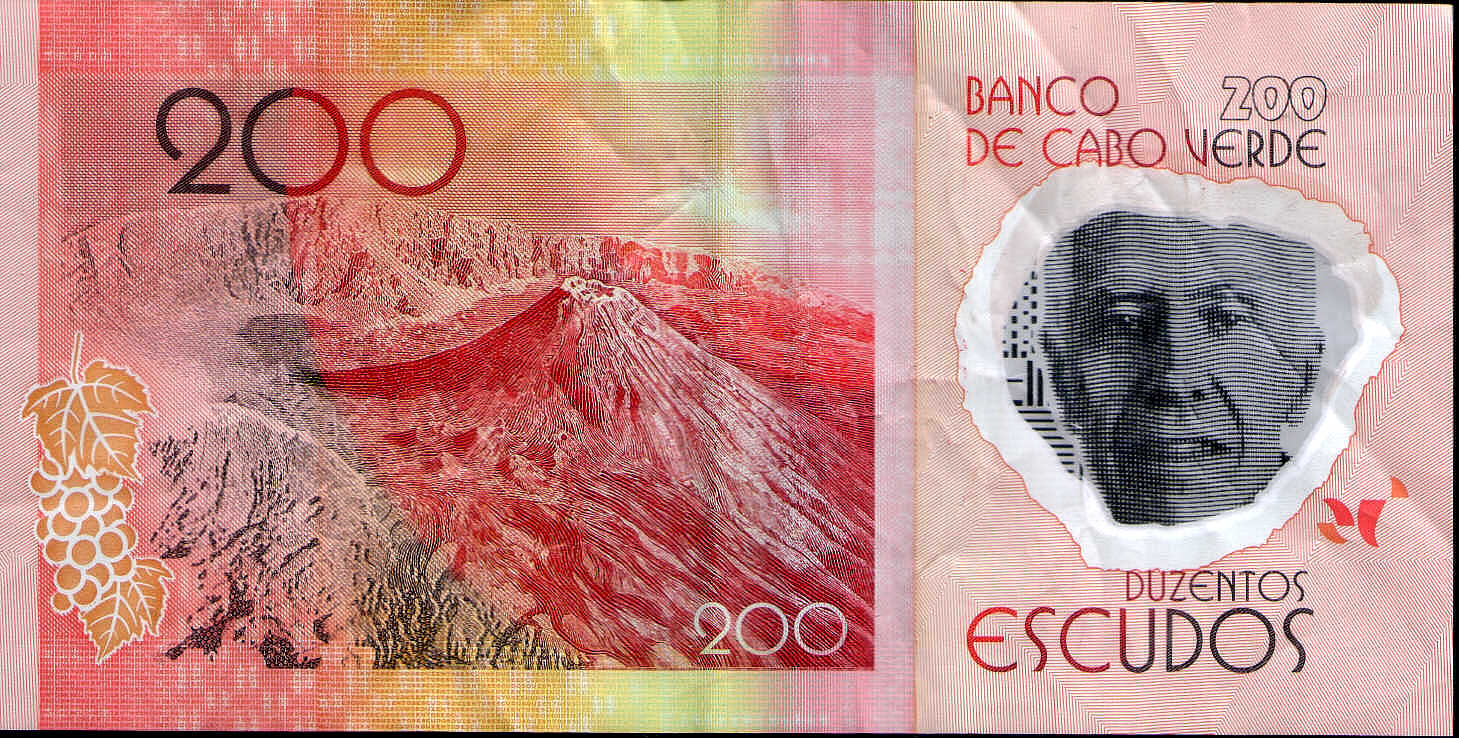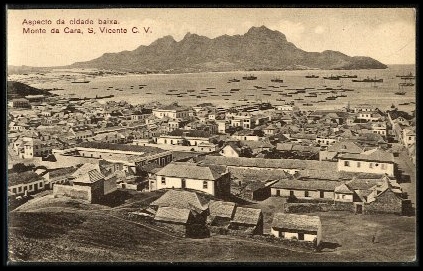|
Leão Lopes
Leão Lopes (born 1948 in Ribeira Grande, Santo Antão, Cape Verde) is a Cape Verdean director, writer, plastic artist and professor. As a filmmaker, he made the first ever feature of Cape Verdean fiction, ''The Island of Contenda'' (1996), based on a novel by Henrique Teixeira de Sousa. He is also author of various documentary including ''Bitú'' (2009) which was about the Mindelo native artist filmed in 2006, and ''São Tomé - Os Últimos Contratados'' (2010). In 1979, he founded AtelierMar in Mindelo, a non-government organization, dedicated to formation of a cultural capacity and local development in which still presides. He was Minister of Culture and Communications during the Carlos Veiga legislature between 1991 and 2000, he is currently deputy member at the Cape Verdean National Assembly and elected as MpD party. He founded the University Institute of Arts, Technological and Culture (M_EIA) in Mindelo and is currently dean and professor. Academic career After finishi ... [...More Info...] [...Related Items...] OR: [Wikipedia] [Google] [Baidu] |
Ribeira Grande, Cape Verde
Ribeira Grande (also: ''Povoação'') is the largest town of the Ribeira Grande Municipality on the island of Santo Antão, Cape Verde. It has become a city in 2010.Cabo Verde, Statistical Yearbook 2015 Instituto Nacional de Estatística, p. 32-33 In 2010 its population was 2,564. It is situated in the northeastern part of the island, near the outflow of the river Ribeira Grande and its tributary |
Santo Antão, Cape Verde
Santo Antão (Portuguese for " Saint Anthony") is the westernmost island of Cape Verde. At , it is the largest of the Barlavento Islands group, and the second largest island of Cape Verde.Cabo Verde, Statistical Yearbook 2015 Instituto Nacional de Estatística The nearest island is São Vicente to the southeast, separated by the sea channel Canal de São Vicente. Its population was 38,200 in mid 2019, [...More Info...] [...Related Items...] OR: [Wikipedia] [Google] [Baidu] |
The Island Of Contenda
''The Island of Contenda'' (original title: ''O Ilhéu de Contenda'') is a 1995 drama film directed by Leão Lopes. Synopsis Cape Verde, 1964. At the feet of a mighty volcano, the traditional Cape Verdean society is undergoing a steady change. The old land-owning aristocracy is disintegrating. A class of mulatto begins to emerge, with a trade-based financial power that threatens the landlords. A new identity arises, a mix of old and new, of African and Portuguese culture, sensual and dynamic. The songs of Cesária Évora follow this inevitable transformation with the beautiful landscape of Fogo, Cape Verde as scenery. ''The Island of Contenda'' was the first feature film to be produced with the financial support of the Cape Verde national film institute (Instituto Cabo-verdiano de Cinema) that no longer exists. It is adapted from the novel by Henrique Teixeira de Sousa. Cast * João Lourenço - Eusébio * Camacho Costa - Felisberto * Luísa Cruz - Esmeralda * Filipe Ferrer ... [...More Info...] [...Related Items...] OR: [Wikipedia] [Google] [Baidu] |
Henrique Teixeira De Sousa
Henrique Teixeira de Sousa (September 19, 1919 in São Lourenço on the island of Fogo – March 3, 2006) was a doctor and author from Cape Verde. Biography Teixeira de Sousa graduated in 1945 in Lisbon with a degree in Medicine, having attended in the following year the Institute of Tropical Medicine in Porto. He later specialized in nutrition and initially went to East Timor to work as a doctor there. Teixeira de Sousa settled on his natal island of Fogo the following year, where he had an important role in maintaining minimal structures of public health. Later on, he worked on the island of São Vicente, until he emigrated shortly before the independence of the archipelago from Portugal, and moved to Oeiras, Portugal, where he lived until his death in 2006. Teixeira de Sousa wrote fiction, including novels, and was a pupil of Baltasar Lopes da Silva. He was a member of the Claridoso Movement, associated with the ''Claridade'' magazine. He is one of the icons of Cape Verd ... [...More Info...] [...Related Items...] OR: [Wikipedia] [Google] [Baidu] |
Mindelo
Mindelo is a port cityCabo Verde, Statistical Yearbook 2015 Instituto Nacional de Estatística, p. 32-33 in the northern part of the island of São Vicente in . Mindelo is also the seat of the parish of Nossa Senhora da Luz, and the municipality of São Vicente. The city is home to ... [...More Info...] [...Related Items...] OR: [Wikipedia] [Google] [Baidu] |
Carlos Veiga
Carlos Alberto Wahnon de Carvalho Veiga (; born October 21, 1949 in Mindelo) is a Cape Verdean politician. He was Prime Minister of Cape Verde from April 4, 1991 to July 29, 2000. Early life and education In 1950, Veiga was born in Mindelo, São Vicente. He later attended school in Praia on the island of Santiago, and later, he graduated in 1971 from the University of Lisbon with a degree in law. Veiga's Jewish maternal grandfather immigrated to Cape Verde from Gibraltar in the 1940s. He is Cape Verde's first ambassador to Israel of Jewish descent. Career After briefly living in Angola from 1972 to 1974, Veiga returned to Cape Verde in 1975, the year that it became independent, to join the African Party for the Independence of Guinea and Cape Verde (PAIGC). During his time in the PAIGC, Veiga served the Ministry of Public Administration from 1975 to 1980 as a judge. After leaving the African Party for the Independence of Cape Verde, he resumed his legal career and led the bar of ... [...More Info...] [...Related Items...] OR: [Wikipedia] [Google] [Baidu] |
University Of Rennes 2
Rennes 2 University (UR2; french: Université Rennes 2) is a public university located in Upper Brittany, France. It is one of the four universities in the Academy of Rennes.The two others are: UBO (Brest), Western Brittany, and UBS in Lorient - seeAcadémie de Rennes/ref> The main campus is situated in the northwest section of Rennes in the Villejean neighborhood not far from the other campus, located at La Harpe. History Creation of the University of Brittany Asked by Francis II, Duke of Brittany, the Pope created the first university of Brittany in Nantes in 1460. It taught arts, medicine, law, and theology. In 1728, the mayor of Nantes, Gérard Mellier, asked that the university be moved to Rennes, Nantes being more trade oriented. The Law school was thus moved to Rennes in 1730. This city already had the Parliament of Brittany, so it was more suited to have this school. In 1793 the national government closed all universities in France. It was not before 1806 that the Law ... [...More Info...] [...Related Items...] OR: [Wikipedia] [Google] [Baidu] |
Baltasar Lopes Da Silva
Baltasar Lopes da Silva ( Caleijão, São Nicolau, 23 April 1907 - Lisbon, Portugal, 28 May 1989) was a writer, poet and linguist from Cape Verde, who wrote in both Portuguese and Cape Verdean Creole. With Manuel Lopes and Jorge Barbosa, he was the founder of ''Claridade''. In 1947 he published '' Chiquinho'', considered the greatest Cape Verdean novel and '' O dialecto crioulo de Cabo Verde'' which describes different dialects of creoles of Cape Verde. He sometimes wrote under the pseudonym Osvaldo Alcântara. ''Ressaca'', his work of poems can be found on the CD ''Poesia de Cabo Verde e Sete Poemas de Sebastião da Gama'' by Afonso Dias. Biography Baltasar Lopes da Silva was born in the village of Calejão on the island of São Nicolau in Cape Verde on April 23, 1907. He attended the seminary in Ribeira Brava in his native island. He later headed to Portugal and studied at the University of Lisbon. When he was at Lisbon, Baltasar Lopes studied with the most important wr ... [...More Info...] [...Related Items...] OR: [Wikipedia] [Google] [Baidu] |
1948 Births
Events January * January 1 ** The General Agreement on Tariffs and Trade (GATT) is inaugurated. ** The Constitution of New Jersey (later subject to amendment) goes into effect. ** The railways of Britain are nationalized, to form British Railways. * January 4 – Burma gains its independence from the United Kingdom, becoming an independent republic, named the ''Union of Burma'', with Sao Shwe Thaik as its first President, and U Nu its first Prime Minister. * January 5 ** Warner Brothers shows the first color newsreel (''Tournament of Roses Parade'' and the ''Rose Bowl Game''). ** The first Kinsey Reports, Kinsey Report, ''Sexual Behavior in the Human Male'', is published in the United States. * January 7 – Mantell UFO incident: Kentucky Air National Guard pilot Thomas Mantell crashes while in pursuit of an unidentified flying object. * January 12 – Mahatma Gandhi begins his fast-unto-death in Delhi, to stop communal violence during the Partition of India. * ... [...More Info...] [...Related Items...] OR: [Wikipedia] [Google] [Baidu] |
Living People
Related categories * :Year of birth missing (living people) / :Year of birth unknown * :Date of birth missing (living people) / :Date of birth unknown * :Place of birth missing (living people) / :Place of birth unknown * :Year of death missing / :Year of death unknown * :Date of death missing / :Date of death unknown * :Place of death missing / :Place of death unknown * :Missing middle or first names See also * :Dead people * :Template:L, which generates this category or death years, and birth year and sort keys. : {{DEFAULTSORT:Living people 21st-century people People by status ... [...More Info...] [...Related Items...] OR: [Wikipedia] [Google] [Baidu] |
Cape Verdean Male Writers
A cape is a clothing accessory or a sleeveless outer garment which drapes the wearer's back, arms, and chest, and connects at the neck. History Capes were common in medieval Europe, especially when combined with a hood in the chaperon. They have had periodic returns to fashion - for example, in nineteenth-century Europe. Roman Catholic clergy wear a type of cape known as a ferraiolo, which is worn for formal events outside a ritualistic context. The cope is a liturgical vestment in the form of a cape. Capes are often highly decorated with elaborate embroidery. Capes remain in regular use as rainwear in various military units and police forces, in France for example. A gas cape was a voluminous military garment designed to give rain protection to someone wearing the bulky gas masks used in twentieth-century wars. Rich noblemen and elite warriors of the Aztec Empire would wear a tilmàtli; a Mesoamerican cloak/cape used as a symbol of their upper status. Cloth and clothing wa ... [...More Info...] [...Related Items...] OR: [Wikipedia] [Google] [Baidu] |
Cape Verdean Academics
A cape is a clothing accessory or a sleeveless outer garment which drapes the wearer's back, arms, and chest, and connects at the neck. History Capes were common in medieval Europe, especially when combined with a hood in the chaperon. They have had periodic returns to fashion - for example, in nineteenth-century Europe. Roman Catholic clergy wear a type of cape known as a ferraiolo, which is worn for formal events outside a ritualistic context. The cope is a liturgical vestment in the form of a cape. Capes are often highly decorated with elaborate embroidery. Capes remain in regular use as rainwear in various military units and police forces, in France for example. A gas cape was a voluminous military garment designed to give rain protection to someone wearing the bulky gas masks used in twentieth-century wars. Rich noblemen and elite warriors of the Aztec Empire would wear a tilmàtli; a Mesoamerican cloak/cape used as a symbol of their upper status. Cloth and clothing ... [...More Info...] [...Related Items...] OR: [Wikipedia] [Google] [Baidu] |





